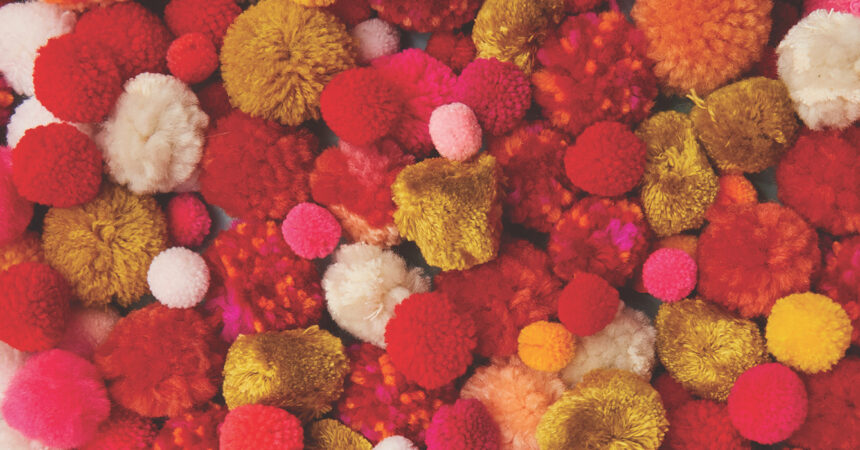cable knit sweater =
Holy Grail of 1986 preppy fashion
When it comes to fashion, I’m a dabbler. I’ve been held in its thrall exactly once, in the fall of 1986. Armed with a summer’s worth of babysitting money and a catalog inked with circled SKUs, I rotary-dialed J. Crew’s 800 number as if it was 911, praying some other XS in Duluth hadn’t just beat me to the last saffron-striped boatneck tee, robbing me of my preppy-sailor-cardigan glory. But that was 9th grade.
Since then my fervor for fashion has rolled steadily downhill, falling off a cliff about a dozen years ago after my first child was born. (True story: I have three maternity tops from that pregnancy that are still in heavy rotation.) I shop as if being chased, eyes darting through racks—or, more often, web pages—in search of what’s washable, wearable, affordable, exchangeable. Does it go with everything I already own? Can it be pulled from a dresser drawer in a pitch-dark bedroom and still look relatively normal come daybreak? In short, I’m shopping for clothes for a blind person.
You’d be surprised how easy it is to check all those boxes, which makes me think I’m not the only woman out there shopping by Braille. Walk into any Gap or Ann Taylor LOFT, and you’ll see the safe sameness on display aimed at people just like me. T-shirts. Denim. Pencil skirts. Button-downs. The colors and patterns may change from season to season, but the overriding message is the same: We have what you need to get on with your life.
Shopping at the Gap and Ann Taylor inevitably makes me feel like I’m at an appointment with a new dentist. Lots of polite nodding—yes, yes, you’re right, I really should get those X-rays taken—but mostly I’m just waiting for the whole ordeal to end. So much stuff I need, but nothing I want. What I want is to be understood.
Anthropologie seemed to be saying, You may dress like you’re blind, but we know you can see.
Which is why Anthropologie was such a revelation. They took one look at me and saw someone else altogether: a woman who’s sick of setting an alarm and packing school lunches and eating at her desk. Someone who longs for the leisurely sense of discovery she took for granted in her twenties. With every ruffled skirt and hammered earring, Anthropologie seemed to be saying: You may dress like you’re blind, but we know you can see. Antlered chandeliers. Gilded pathways. Window displays festooned with paper birds, piles of yarn and giant mushrooms. I was suddenly that high school girl again, awed by possibility, wondering who I could be.
That giddy breathlessness is precisely why Anthropologie’s revenue reports are so often a jewel in the ROI crown of Urban Outfitters, Inc. What looks like the whim of a handful of artsy trendsetters in the marketing department is actually a stage that’s been set with X-Acto knife precision by the CEO, the target of which is not my heartstrings but my Visa card.
It comes on a stand made from wood
sourced by Sussex tree surgeons.
The whale-tail measuring cups, bulldog cookie jars and $3,200 “harvest hare hats” have been planted like props on a movie set, transporting our brains from dull reality to the magic of the imaginary. Does anyone buy those cookie jars? I should hope not, but it doesn’t actually matter. For an hour or so on a Sunday afternoon, those jars are doing the work of wrapping us in a world as carefully scripted as the ones waiting for us in our Netflix queue. The tangerine suede wedges we walk out with are the price of admission, a piece of that world to take home as a souvenir.
Of course, all this set-building has to happen before the curtain rises. It’s not something you can just throw up somewhere in the middle of Act II. But many brands do just that, scrambling to spin a whole new story every time there’s a product to launch.
Do a Google search on Chevrolet, and you’ll see this kind of brand schizophrenia in action. Is Chevy about “fitting more families and more budgets” or is it about “the best time we’ve ever had”? Is it “always practical, now more efficient” or does it “put the purr in performance”? Chevy may give us decent cars and trucks, but it has failed to give us anything to believe in or belong to.
It’s not (just) about making great products. It’s not about sexy TV spots or viral videos. It’s about creating a brand people want to crawl inside and live in forever. Give people a story they can believe in, create products and marketing that feed that story, and everything else—including profits—will follow.
It’s about creating a brand people want to crawl inside and live in forever.
Story is what transforms a piece of cardboard into a bold symbol of resistance. It’s what turns a down jacket into a pledge of allegiance to planet earth. And it’s what causes frazzled working mothers without the time to brush their teeth to squander 88 minutes of “dwell time” fingering shawls, coveting bed linens and squeezing their thighs into velveteen sausage casings.
Well played, Anthropologie, well played.

